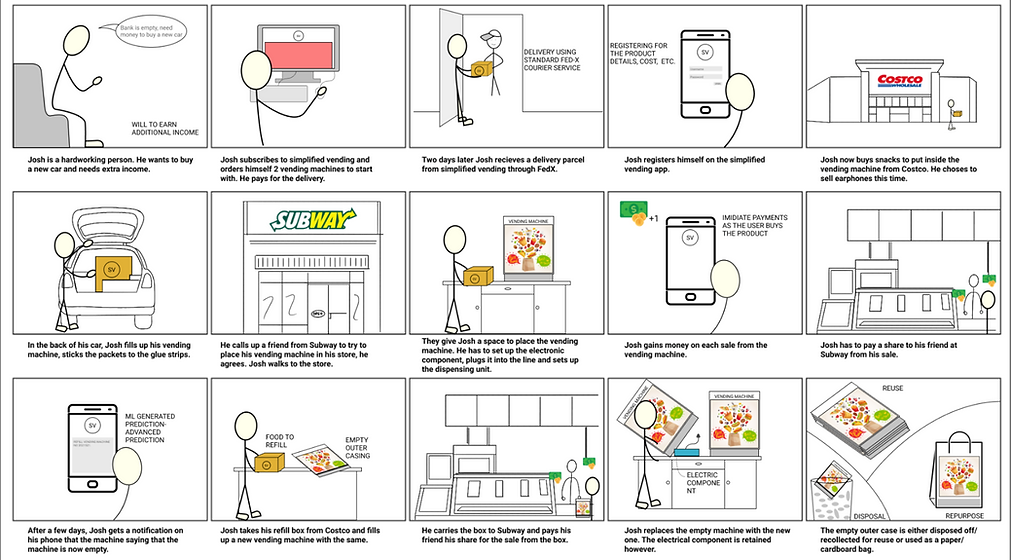"Change in context brings changes in the content" - Prof. Anil Gupta
Simplified Vending
Disposable vending machines for the American market. A service strategy designed to revolutionise the vending machine market with proprietary $30 vending machines.
Introduction
Project: A part of my B.Des. thesis part 2 this project was aimed to mitigate exclusion caused due to unemployment by the means of a low investment, low-risk business solution for first world countries.
Project Mentor: Prof. Puneet Tandon, Mr Aditya Chand
My role: User Research, Service Designer, Product Designer, Business Strategist
Timeline: 4 months
Scope of work:
To develop a fresh way of vending which is disposable, ship-able by the usual network and is a low-cost solution along with a viable business strategy
Research- Insights
Business Models in Place:
1. Direct to consumer
2. Machine distribution
3. Buying a running business
4. Brand partnership
There are 4.6 million vending machines in the US
The business of vending machines is fairly simple and operations of FMCG retail has high-profit margins. Hence, a lot of people turn to the vending machine business. These people start with a couple of machines and make money by the sale of product over time pan locations. Usually handled within a family, the operations are simple to adapt to.
Reality: These businesses are profitable for an average of 3-4 years and then have reported going down the drain.
.png)
The Service
Simplified vending is the service component meant to be an easy to adapt solution designed to help mitigate unemployment in the context of first world nations. Stakeholders are strategically placed to simplify logistics and leverage the personal scaling up and propagation potential that individual partners bring with them.
.png)
People can choose to become either operators or location providers in this service based on the resources they possess. Their roles are mentioned here.
.png)
.png)
The system has been designed to optimise processing and minimise computational load from the vending machines. The computation would be shared by individual mobile devices of the users.
Storyboarding
1. A vending machine operator:
.png)
2. Customer:
_edited_edited_edi.jpg)
The Product
The VendX vending machine would be manufactured with the following functional requirements:
1. They should each cost less than $50
2. Their body would be built with corrugated paper
3. Their body would be connected with a power supply
4. The body should be use and throw
5. Comprising of a tech part and a body
.png)
Tech Part + Body
Mechanism Development

Moodboard
Product placement on hot-cut trays
Capacity of hot-cut trays
Assembly of the tray

Final Product
QR codes embedded into illustrations to enable payment
Assembly of the main body
VendX in context
More Projects
 |  |  |  |
|---|---|---|---|
 |  |































